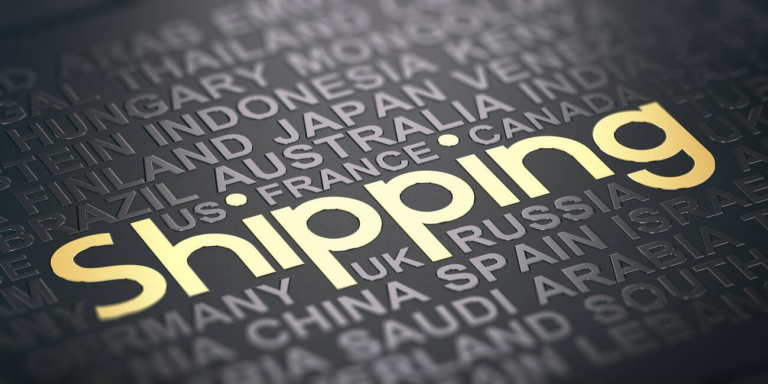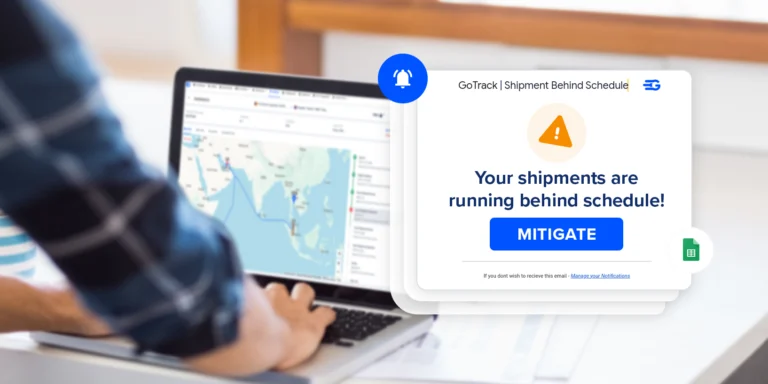9 Order Management Software Solutions for Businesses of All Sizes
Selecting the right order management software goes far beyond simply tracking shipments. It plays a central role in streamlining operational workflows, minimizing costly errors, and ensuring timely deliveries across complex distribution networks.
Whether you’re a growing ecommerce startup or a multinational enterprise, the effectiveness of your order management system can directly impact your profitability and customer satisfaction. Below, we dive into nine leading OMS solutions, analyzing their core features, strengths, drawbacks, and ideal use cases to help you make a well-informed choice that aligns with your business objectives.
Best Order Management Software
| Software | Pros | Cons | Ideal For |
| GoComet | Built for global supply chains, customizable, AI ETA | Best for mid-large enterprises | Manufacturers, 3PLs, exporters |
| NetSuite | Deep ERP integration, scalable | Expensive, long implementation | Large enterprises needing ERP |
| QuickBooks Online | Easy to use, affordable | Limited scalability, lacks channels | Startups and small local businesses |
| ShippingEasy | Easy setup, affordable | US-focused shipping only | Ecommerce and DTC brands |
| Shippo | Developer-friendly, transparent pricing | Weak inventory features | Small retailers and developers |
| Salesforce OMS | Excellent CX tracking, CRM integration | Requires Salesforce setup | Salesforce users in large enterprises |
| Fishbowl | Great for manufacturing, inventory control | Clunky UI, learning curve | Manufacturers and wholesale distributors |
| ShipStation | Fast setup, reliable syncing | Not for complex networks | Ecommerce marketplaces |
| Katana | Clean UI, ideal for MTO workflows | Limited analytics | Small manufacturers, craft producers |
Top Order Management Solutions
1. GoComet
GoComet is purpose-built for high-volume, international logistics operations. It combines multiple tools into one platform, offering everything from real-time container tracking to automated invoice reconciliation.
GoTrack uses AI-powered predictive analytics to monitor shipments end-to-end. GoShipment centralizes every order movement and supports dynamic routing and document handling. Meanwhile, GoInvoice automatically flags discrepancies and ensures audit-ready compliance. Its modular design integrates seamlessly with existing ERP and TMS systems, offering support for multi-channel order management.
Ratings:
G2: 4.8/5
Gartner: 4.9/5
Testimonials:
“GoComet has helped us a lot in organizing our entire logistics process, specially giving real time tracking visibility with high transparency. It gives us latest updates of tracking with respect to the different milestones.”
2. NetSuite (Oracle)
NetSuite’s order management capabilities are tightly integrated within its full ERP suite, enabling complete visibility and control across finance, procurement, inventory, and customer service. It automates the entire order-to-cash cycle, supports multi-location inventory visibility, and handles complex workflows like dropshipping and split shipments.
Real-time syncing with CRM and financial modules ensures that sales and fulfillment data stay aligned, while its support for multi-currency and tax compliance makes it ideal for global operations.
Ratings:
G2: 4/5
Gartner: 4.1/5
Testimonials:
“The system has a lot to offer, but is not very user-friendly. The overall interface is difficult to manage, training was not easy, and the capabilities are not used to their full advantage because we are unsure of how to use them, even with paying for the service.”
3. QuickBooks Online
QuickBooks Online offers basic yet effective order fulfillment software for small businesses, especially those already using it for accounting. It includes real-time tracking of inventory, order statuses, and tax reporting. While it lacks built-in warehouse or shipping automation, it connects easily with platforms like Shopify and WooCommerce, giving smaller teams an accessible way to handle inventory and order management alongside finances.
Ratings:
G2: 4/5
Gartner: 4.1/5
Testimonials:
“The most helpful things about QuickBooks is being able to have all of my clients in one place. The ease of implementation is pretty good as long as they are a new client and set up correctly. I use. Customer Support is really lacking, it takes a while to get anything kind of complicated resolved. I have to pay a ton to go to their conference to speak to someone in person to get one of my issues resolved. If you don’t set up a client correctly it can take a very long time to undo that.”
4. ShippingEasy
ShippingEasy focuses on ecommerce shipping and order automation. It streamlines everything from label creation to customer email marketing. Orders and inventory sync automatically across platforms like Amazon, Etsy, and Shopify. It also includes tools for customer engagement and performance analytics. While it’s not built for international operations or enterprise resource planning, it offers a powerful out-of-the-box experience for growing online stores.
Ratings:
G2: 4.6/5
Gartner: NA
Testimonials:
“Text-based communication is easy to access and use. I dislike it when I am provided with a link to solve an issue or answer a question instead of receiving direct assistance. When we started using ShippingEasy, we did not face this problem initially. Considering the fee we pay for the service, I believe we should receive more support than just a manual.”
5. Shippo
Shippo stands out for its developer-friendly approach to order processing and shipping. With a powerful REST API, businesses can connect directly to major carriers, automate shipping label generation, and streamline returns. It’s ideal for companies building custom logistics solutions in-house. However, it lacks native tools for inventory or warehouse management, so it works best when paired with a dedicated inventory system.
Ratings:
G2: 4.2/5
Gartner: N/A
Testimonials:
“I love how Shippo has integrated with my WIX website. I also love the shipping discounts! There isn’t much I dislike about Shippo. It is a little wonky if you want to create a label independently from orders that come in through your site (once you have integrated it into the site).”
6. Salesforce Order Management
Salesforce Order Management is deeply embedded into the Salesforce ecosystem, making it a strong choice for businesses looking to integrate customer data with order handling. It covers the entire lifecycle, from order capture to post-sale service across physical and digital channels.
Its strengths lie in its ability to unify CRM, commerce, and service data, making real-time decision-making and personalized experiences possible. It also supports complex return flows and refund scenarios.
Ratings:
G2: 4.3/5
Gartner: N/A
Testimonials:
“This may be more due to the organization I was in, but due to the IT department controlling what views we see, they would make changes that made no sense to someone in Sales. For example, they moved Contacts to a sub-view and put in place Related Contacts. RC’s did not have the same info. So this added another step or two to get the view I needed.”
7. Fishbowl
Fishbowl is an inventory-first solution that doubles as a robust order management system, especially for manufacturers. It includes tools like barcode scanning, bill of materials tracking, and demand forecasting. Its integration with QuickBooks ensures accounting stays aligned with warehouse data. While the UI is dated, its functionality covers everything from inventory movement to work order generation, making it particularly useful in discrete manufacturing and wholesale distribution.
Ratings:
G2: 4/5
Gartner: 4.3/5
Testimonials:
“This software gives boost to my industry with better inventory solutions of MRP(Material requirement planning) and best inventory management solutions. It minimize the human efforts in planning and gives better results to improve inventory management systems.”
8. ShipStation
ShipStation provides a fast and scalable solution for multi-channel ecommerce order management. It handles high-volume shipping with features like batch label printing, branded tracking emails, and real-time order syncing. Integrations with over 70 platforms, including Shopify, eBay, and BigCommerce, make it especially appealing to sellers looking to centralize operations. However, it’s more shipping-centric than inventory focused.
Ratings:
G2: 4.3/5
Gartner: N/A
Testimonials:
“Shipstation makes it super simple for users to manage thousands of parcels every day. support is mostly out of hours and when the system goes down, theres not much you can do but wait.”
9. Katana
Katana is a visual and user-friendly inventory and order management platform tailored to small and midsize manufacturers. It offers live inventory control, production planning, and drag-and-drop scheduling. The dashboard provides real-time updates on material availability and order progress. Its integration with ecommerce and accounting tools like Shopify, WooCommerce, and Xero helps unify operations without the need for complex infrastructure.
Ratings:
G2: 4.4/5
Gartner: N/A
Testimonials:
“Katana works well with Shopify and keeps our inventory, order status, and inbound product organized. Tracks multiple shipping locations and helps us keep ahead of stock issues. Katana lacks a quick and easy way to tag stock items as damaged or on hold. It can be done using a location, but the standard package only allows 3 locations, and we need them all for actual warehouses.”
Conclusion
Your decision to invest in order management software should be guided by a clear understanding of your current logistics workflows, future growth plans, and customer experience goals. If your operations involve handling global shipments with multiple vendors and compliance requirements, a solution like GoComet offers the comprehensive visibility and automation needed to stay competitive.
For smaller businesses with simpler operations, tools like ShipStation or QuickBooks provide the right balance of usability and core functionality. What matters most is scalability. Choosing a system that can grow with you, not one you’ll outgrow within a year. As your order volumes increase and your network becomes more complex, you need a platform that adapts without sacrificing speed or accuracy.
This makes robust integration, automation, and real-time data visibility essential for long-term success. That won’t hold you back as your operations evolve. In the fast-paced world of modern commerce, the right OMS doesn’t just support your business. It helps you lead.
And when complete shipment visibility, automation, and speed are non-negotiable, GoComet is built to deliver exactly that.ust support your business. It helps you lead.
And when complete shipment visibility, automation, and speed are non-negotiable, GoComet is built to deliver exactly that.





